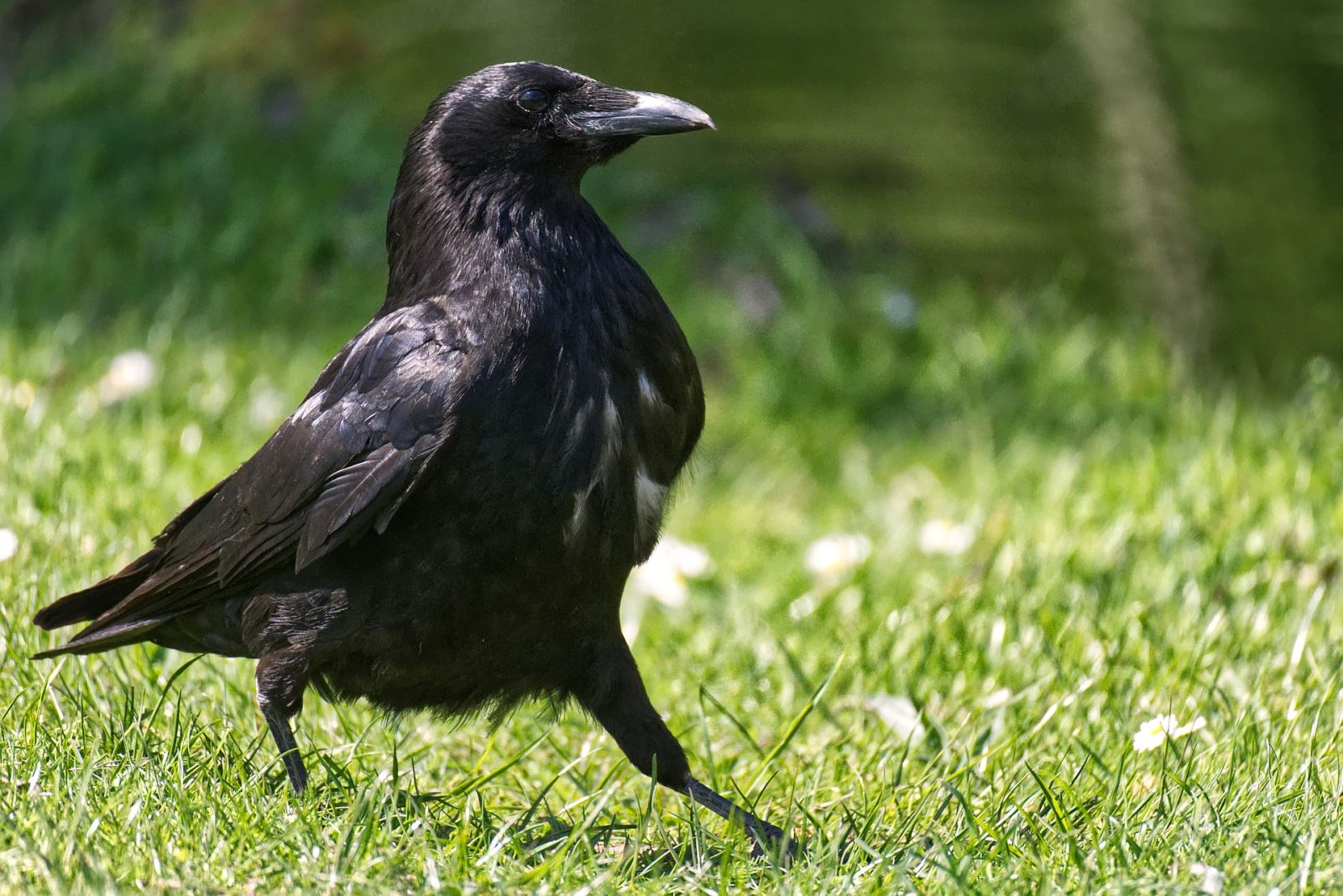Confirmation came this week that proud parents Huginn and Muninn have welcomed four healthy chicks into the world, the first to be hatched at the Tower since 1989.
The ‘lovebirds’ arrived at the Tower at the end of 2018 and it wasn’t expected the pair would have settled in time for the breeding season which typically falls in late March, however in mid-April Yeoman Warder Chris Skaife, the Ravenmaster at the Tower, noticed they had built a large nest overnight and within only a few short weeks he could hear the sound of chirruping chicks.
YW Chris Skaife, Ravenmaster at Tower of London, said: “I’m absolutely thrilled that we have welcomed four new baby raven chicks, the first to be born at the Tower in 30 years. It was quite unexpected as the parents, Huginn and Muninn, only came to us quite recently but I’m pleased they have settled into life at the Tower.
My suspicions were first piqued that we might have a chance of baby chicks when the parents built a huge nest suddenly overnight and then almost immediately the female bird started to sit on it, then on the 23 April I noticed the birds going to the nest with food, however it has only been this week that I’ve been able to get up close and see for myself that they have four healthy chicks as I hadn’t wanted to disturb them too much, it’s best to let nature take its course.
Having worked with the ravens here at the Tower for the last thirteen years and getting to know each of them, I feel like a proud father!”
The chicks are currently feeding at least every two hours during this growth development stage. The parents work as a team, the male, Huginn, prepares the food and then passes it to the mother, Muninn, who then gives it to the chicks. They have a varied diet of quail, mice and rats, provided to them by the Ravenmaster. Already, in the last three weeks, the chicks have grown rapidly, having quadrupled in size from hatchlings around 8cm tall to over 30cm and they even have their recognisable iridescent black plumage coming through, although it will take almost a year for their beaks to turn from pink to black.
The Tower usually has six ravens at any given time, although there are currently seven, plus the breeding pair and their chicks. One of the chicks will stay at the Tower and it will join the other ravens later in the summer, when it is older.
As the ravens started to hatch on the 23 April, St George’s Day, the raven that will be staying at the Tower will be called George or Georgina in honour of the occasion.

Facts about the Tower ravens:
Seven ravens currently reside at the Tower plus the breeding pair and chicks:
Erin (female, Somerset, 2006)
Jubilee (male, Somerset, 2013)
Harris (male, Somerset, 2016)
Poppy (female, Surrey, 2018)
Gripp (male, Somerset, 2013)
Rocky (male, Somerset, 2008)
Merlina (female, South Wales, 2005)
It is not known when the ravens first came to the Tower of London but their presence is protected by legend. Traditionally with birds of ill omen, it is their absence rather than their presence that is feared at the Tower of London. There is debate as to when the legend dates from, but the legend say that if the ravens leave, the Tower would fall and the Kingdom would fall, so Charles II decreed that there must always be at least six here.
Tower Ravens enjoy a long life – as well as a good diet and veterinary care, their life expectancy in captivity is higher than in the wild. The oldest raven to live at the Tower died at the age of 44 (1884-1928).
Historically the ravens were kept at the Tower using feather management, which is when the flight feathers are lightly trimmed, the feathers however grow back. The current Ravenmaster prefers not to undertake this method and where possible many of the ravens are in full flight but stay because they are territorial and they have a bond with the Ravenmaster – plus the tasty treats they get!
The ravens can look forward to a good life at the Tower. The ravens are given a variety of raw meat each day bought fresh from Smithfield market by the Raven Master. Once a week they enjoy an egg, plus the occasional rabbit, which is given to them whole because the fur is good for them!
The first and last raven to successfully be hatched and live at the Tower was Ronald Raven (named following a Blue Peter competition) on 1 May 1989.
In Norse mythology Huginn (old norse for “thought”) and Muninn (old norse for “memory”) were the raven messengers for the god Odin.
All ravens are bred in captivity for educational and display purposes.
Historic Royal Palaces is the independent charity that looks after the Tower of London, Hampton Court Palace, the Banqueting House, Kensington Palace, Kew Palace and Hillsborough Castle. We help everyone explore the story of how monarchs and people have shaped society, in some of the greatest palaces ever built. We raise all our own funds and depend on the support of our visitors, members, donors, sponsors and volunteers. With the exception of Hillsborough Castle, these palaces are owned by The Queen on behalf of the nation, and we manage them for the Secretary of State for Digital, Culture, Media and Sport. Historic Royal Palaces cares for Hillsborough Castle under a separate contract with the with
Northern Ireland Office. Registered charity number 1068852. For more information visit www.hrp.org.uk
Related
Comments
Comments are disabled for this post.

.png)


 to add an item to your Itinerary basket.
to add an item to your Itinerary basket.









